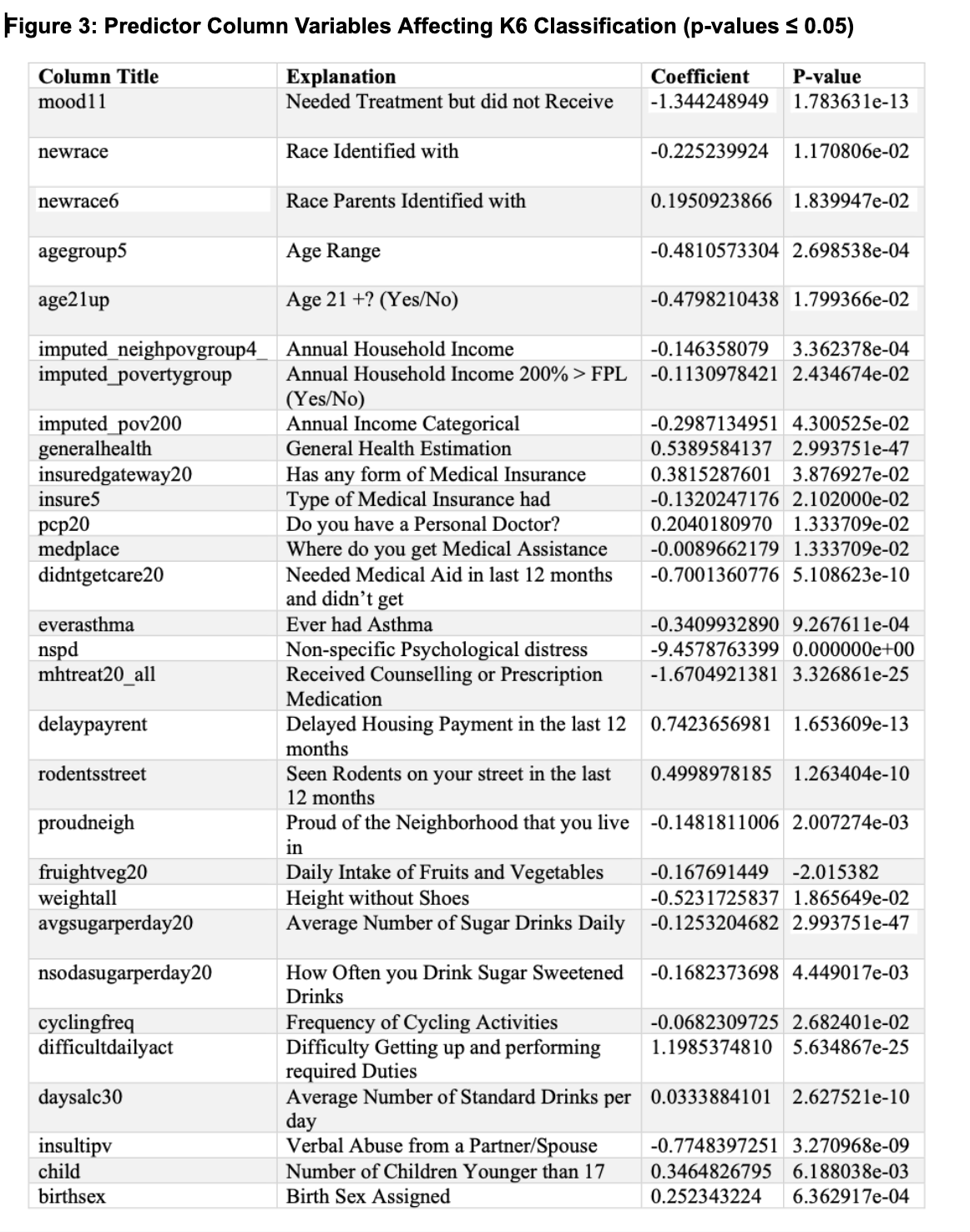Factors Influencing the Mental Health of New York City Residents
Using the 2020 NYC Community Health Survey (NYCCHS), I investigated the predictor columns that directly affect the mental health of NYC residents, paying special attention to low and critical mental health scores.
Next, I used these predictor columns to predict the mental health class of NYC residents from the 2021/2022 NYCCHShealth surveys.
Project Presentation
Project Research Paper
Technical Overview
- Tools: Python, Scikit Learn, R-Studio
Summary and Results
This study aimed to uncover the relationship between mental health and different characteristics among residents of New York City. It revealed 30 characteristics, ranging from socioeconomic indicators to lifestyle choices, providing valuable insights into the factors influencing an individual's mental well-being in urban areas. The findings demonstrated that socioeconomic factors such as increased income levels, access to medical services and counseling, regular physical exercise, physical stature, were positively correlated with mental health. Conversely, higher alcohol intake, increased poverty levels, frequent consumption of sugar-sweetened beverages, and specific lifestyle choices were identified as negative influencers on mental health. Furthermore, our exploration into predictive modeling highlighted the superiority of the random forest model among the four models trained. This model demonstrated an impressive 66% accuracy in predicting the mental health classes of respondents in previously unseen data.
The 30 predictor variables I found and their effect on mental health are documented below. These were the predictor columns from the backward selection that reported p-values less than 0.5. The magnitude of the effect on mental health is represented by the "Coefficient" column, with negative coefficient values representing favourable mental health conditions, and positive coefficents indicating an adverse effect on mental health.

Want me to help with your project?
Leave me a message here and I will be in touch shortly
